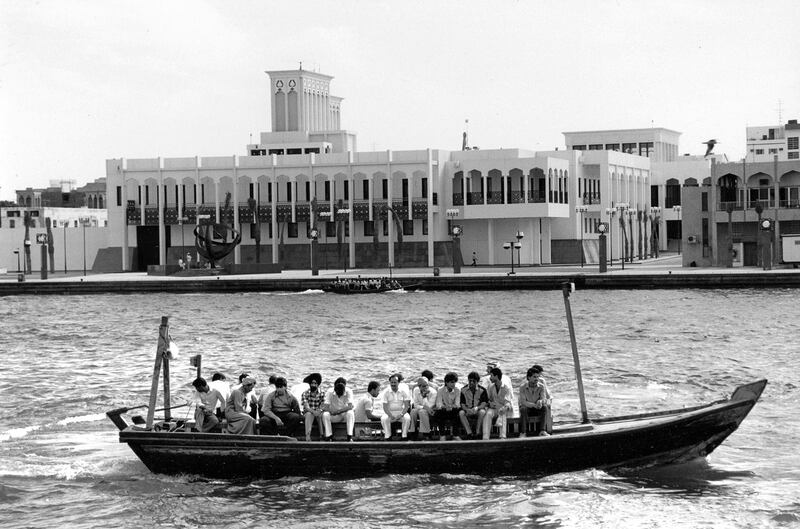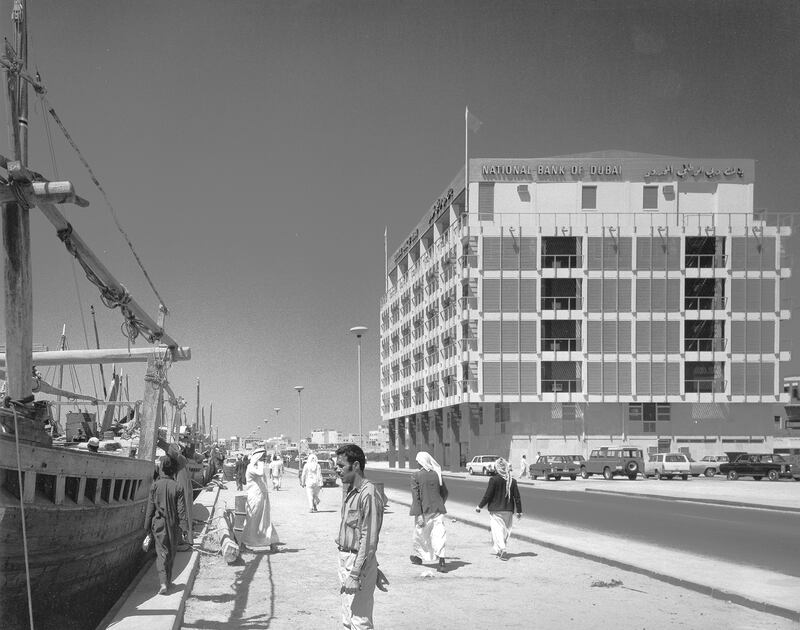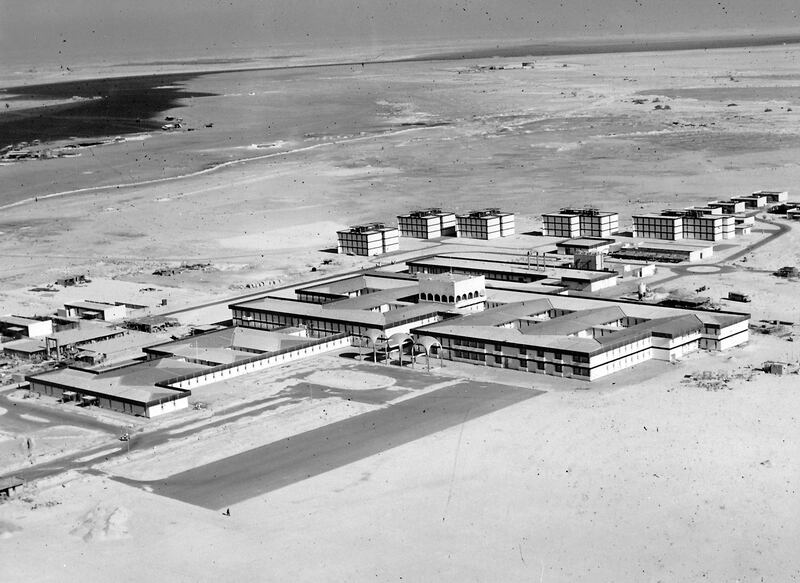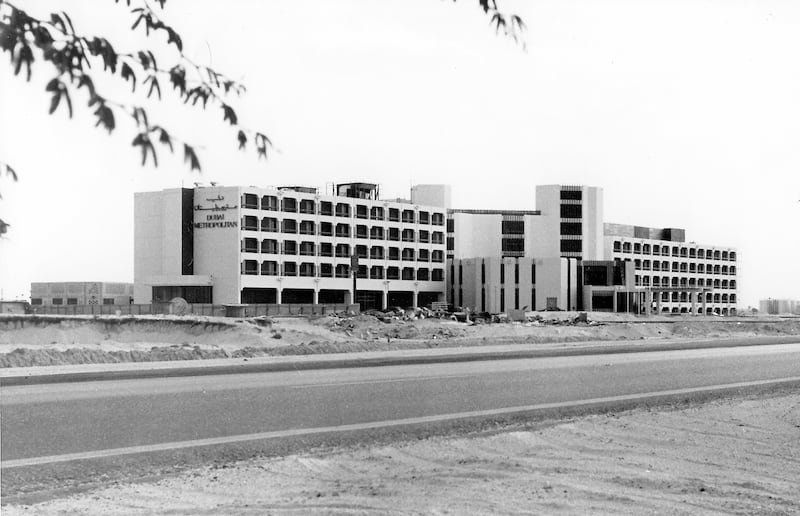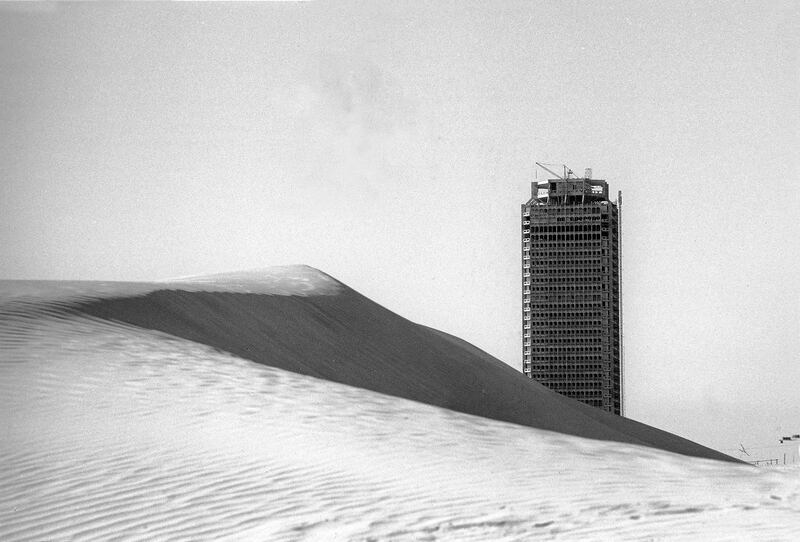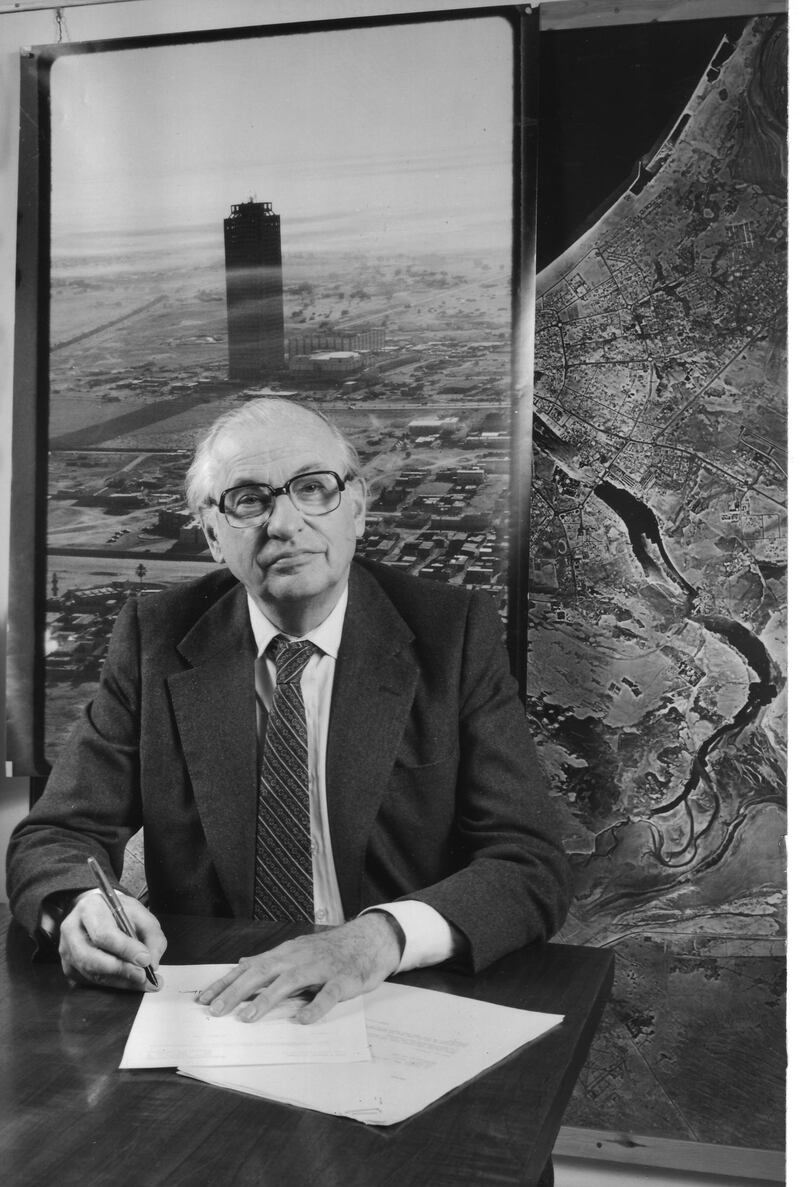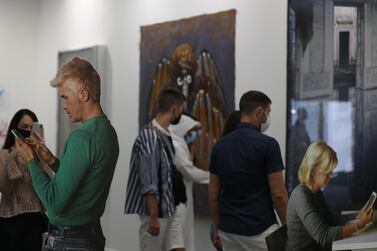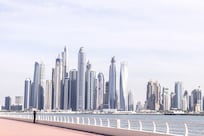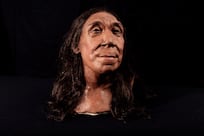Todd Reisz's Showpiece City: How Architecture Made Dubai is best read at a Creekside cafe in Deira, in full view of the city's glinting, jagged skyline and the waters that helped to elevate the emirate. Every time you look up from the book's pages you'll find yourself appreciating the surrounding cityscape anew.
The book begins in the decades before the establishment of the UAE, when the city was a trading port under British influence, still trying to cement itself as a regional trading hub.
With capering prose and taut storytelling, Reisz begins to rebuild Dubai around the winding Creek, highlighting the successes and failures that shaped the foundations of the city as we know it today.
Just as captivating are the 125 photographs in the book. They show the narrow alleys of Bur Dubai in the late 1950s, abras crossing the Creek before it was flanked by glass buildings, and the construction of Dubai World Trade Centre in the early 1970s.
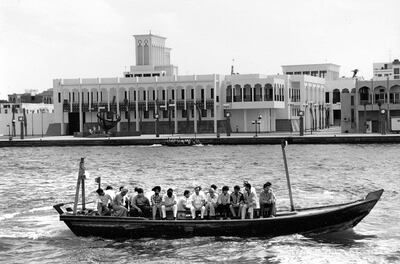
While Showpiece City covers a number of pivotal moments in the emirate's history, starting from the early 20th century, its focal point is its period of development between the 1960s and early 1980s. It is difficult to tell the story of Dubai in those days without mentioning John Harris.
The British architect has a starring role in Showpiece City. The book tells the story of how Harris, already a familiar name in the region as a result of his projects in Kuwait and other Gulf states, was tasked with developing the first master plan for Dubai. It details his introduction to then-ruler Sheikh Rashid bin Saeed by British Political Agent of the Trucial States, Sir Donald Hawley, and follows his work on Al Maktoum Hospital, Rashid Hospital, the National Bank of Dubai and Dubai World Trade Centre.
Each of these projects have their own dedicated chapter. Reisz says the structures were Dubai’s showpieces of the time, meant to signal what was yet to come.
“That’s where the title comes from,” he says. “It’s a reference to how these projects were being described. But it also goes back to the way people theorise or generalise Dubai, saying it’s all about appearances ... But we are at risk of missing something if we’re not looking at the surface. Appearance definitely plays a large role in the book.”
Whether we are considering the ballooned arches of Rashid Hospital or the hive-like exterior of Dubai World Trade Centre, Harris’s facades were meant to show the world Dubai’s confident stride into urbanism, to show it could provide comfort and amenities.
Reisz first came across Harris's name in 2005. Reisz, an architect himself, was visiting Dubai for the first time, tasked by a Dutch architectural firm to learn more about the historical context of the city for a presentation at the 2006 Venice Architecture Biennale.

Reisz found Harris's name mentioned in passing in the 1982 book From Trucial States to United Arab Emirates by Berlin-born historian Frauke Heard-Bey The book credited Harris as the person entrusted "to draw up a town plan for Dubai" and that was enough to inspire Reisz to look deeper into this mysterious architect.
“I think people know Harris today because there is an interest in early modern architecture in Dubai and because there is more published, but I don’t think many people knew who he was in 2006,” Reisz says.
Harris's architectural approach struck Reisz for its apparent restraint and practicality. He gives the example of the World Trade Centre. "Harris didn't want to use a lot of glass and he was mindful of what technologies were available and what technologies could be repaired and maintained in Dubai at the time so that you weren't stuck with a tower of 30 storeys and then the elevators didn't work."
After completing the project for the Biennale, Reisz quit his job and set out to write a book on Harris. The project, he thought, would take him a year to complete. In the end, it took 12 years and Showpiece City became not so much about Harris but "Harris in Dubai". The book was published by Stanford University Press in October 2020 and became available in local bookstores in March.
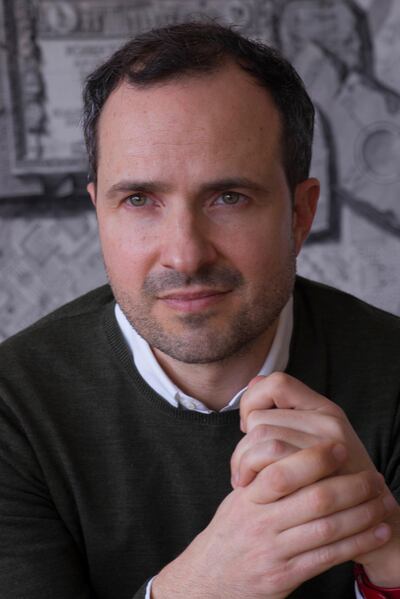
One reason it took so long to write, Reisz says, was because the research material was not readily available. "In 2006, Google was not yet what it is today. There was also a lot less written on Dubai and other cities in the Gulf," Reisz says. He notes that so much has happened since then in terms of historical writing, anthropological writing and general urbanism, but when he first started the project, his resources were limited.
Just as he was starting to write his book, Reisz had the chance to meet Harris in person in 2006, two years before his death. The British architect had already suffered two strokes and Reisz says they couldn’t talk for very long. “His son Mark became my major informant for this project,” Reisz says. “It took him years to go through his father’s old files and boxes. If I had rushed to write this book in two or three years, I wouldn’t have 85 per cent of the material that I had in the end.”
Oh, what a way to start the weekend. Still wrapped up from the journey, *Showpiece City* has been spotted in a Lahore bookstore by @SairaAnsari_. I hope the copy finds a good home! pic.twitter.com/Mv80xtcbCX
— Todd Reisz (@ToddReisz) April 9, 2021
Reisz notes that though a lion's share of the archival photographs he amassed did make it into the book, he had to leave dozens out.
The photographs will be showcased in an exhibit at the Jameel Arts Centre in September. Titled Off Centre / On Stage: Dubai Scenes from the 1970s, the exhibition will begin in the month before Expo 2020 Dubai and highlight how "Dubai has been a city of exhibitions since the 1960s."
While Showpiece City has informed the concept of the exhibition, Off Centre / On Stage is its own independent project, Reisz says.
“Of the 60 images that will be exhibited, only one was used in the book,” he says. “They are largely photographs of the World Trade Centre under construction and pictures of the old city.”
The name of the exhibition, Reisz says, is a reference to Dubai World Trade Centre. At the time when it was being built, he says “there was all this work done to create a centre in the city around the Creek, and just as that was literally being cast in cement, the World Trade Centre begins to suggest a new centre.”
Reisz says he hopes both the book and exhibition instil an appreciation for the city's early stages of development in the time preceding its tiger economy. With Showpiece City, Reisz says that though he put the project together with an academic publisher, he wrote it with the intention that anyone would be able to pick it up. "There's a need for people to know what happened and how it happened," he says. "I'm not saying my book is the final word. There needs to be more books on the history of Dubai. Mine is one way of doing it."
Reisz will be discussing 'Showpiece City' in an online event held by Princeton University at 8pm on Wednesday. Registration for the event can be done here.
